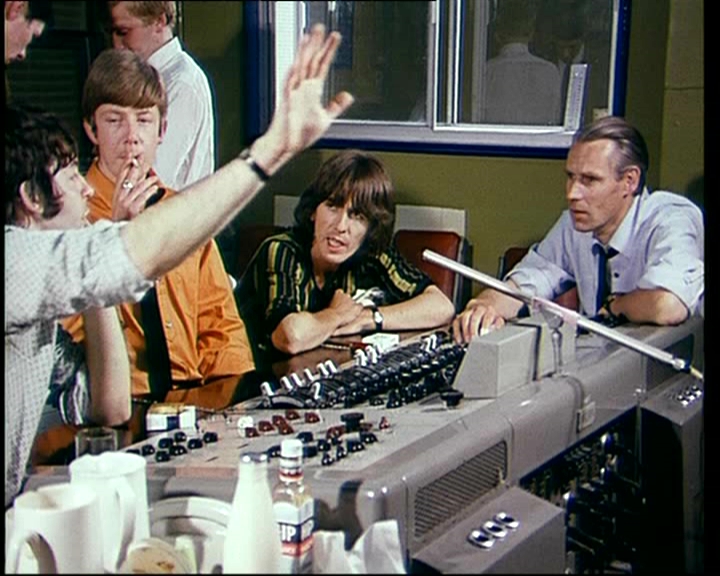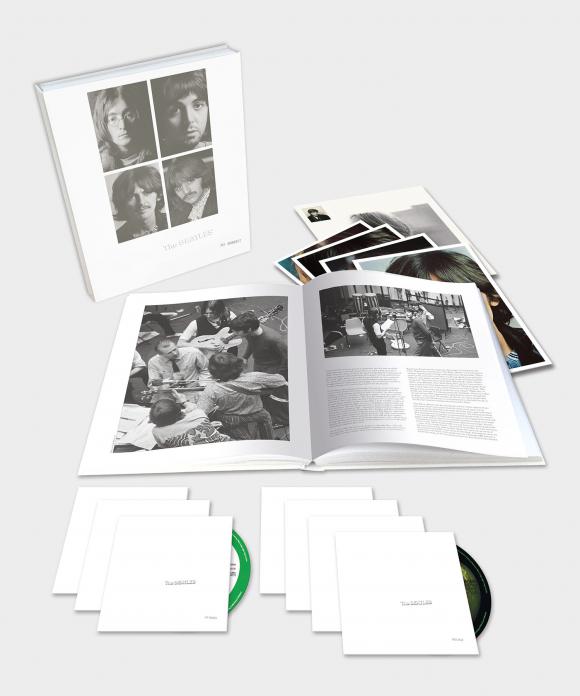The Beatles’ ‘The White Album’ is set to be re-released on 9 November to celebrate the album’s 50th anniversary. This anniversary re-release will be housed in a series of packages, with its 30 tracks having been newly mixed by producer Giles Martin and mix engineer Sam Okell in stereo and 5.1 surround audio.
Beatles recording engineer Ken Scott talks to Jason Barnard about the recording of this legendary double LP.
1968 saw a back to basics approach for The Beatles. How did the recording process and studio set-up change from Magical Mystery to ‘Lady Madonna’ onwards?
I don’t think the recording process and studio set-up changed particularly, it was more their frame of mind that changed. They wanted more of a basic band feel for most of the album. A bit more down and dirty.
The White Album has been called ‘the tension’ album. However it’s clear that there were great moments of togetherness like the recording ‘Yer Blues’ in tiny room 2A. Am I right to infer that the negative atmosphere has been overblown over the years?
Very much overblown. Yes there were times it got a little touchy, but I’ve worked on projects that have taken a couple of weeks and things have blown up for a short time. Remember they were working on that project for many months. It’s bound to happen, it’s part and parcel of the passion involved in creating music. When writing my book I wanted to make sure that my recollections were correct and so I went to Chris Thomas, George Martin’s assistant, and John Smith, my assistant engineer, and they both concurred that we had a blast, it was a lot of fun with just a couple of darker moments.
Despite the shift away from psychedelia their experimentation didn’t end. Can you explain how the band used the studios/rooms at Abbey Road to get a different sound?
They always wanted things different. I was learning my gig at this time so I had the most incredible freedom being able to use different microphones, different placement and anything else I could lay my hands on always knowing that either if they liked or hated the sound I was doing exactly what they wanted.
When sort of challenges did they give you as engineer to produce a sound or represent feeling?
They were constantly challenging us as much as themselves. Everything from having to record the band plus live vocals in a tiny room by the side of Number Two studio (Yer Blues) to recording Paul playing a couple of drums down the bottom of a stairwell (Mother Nature’s Son). On one occasion we set up the studio like a living room because John felt he always played things better at home in a relaxed atmosphere. He learned quickly that his listening at home was what was relaxed not his playing. You name it we probably tried it.
Despite some tracks taking many hours to produce, the inception and recording for others like ‘Birthday’ could be very quick. What are your recollections of recording ‘Birthday’?
Birthday was recorded in a day and it came together because Chris (Thomas) had never seen an early rock and roll film, I think it was “The Girl Can’t Help It” but I could be wrong. He and Paul were chatting and it just so happened the film was on TV that night so we all bundled off to Paul’s house, watched it, then went back to the studio and recorded into the early hours. Voila, a complete track for the album.
Chris Thomas was labelled as producer in George Martin’s absence at times. How did this affect the recording process – did this mean you had more input?
I had no more or less input whilst Chris was there. Once they trusted you anyone could suggest things and overall they were the arbiters of those siggestions being good or bad. Chris tells a great story of how he eventually became comfortable working with them, but that’s his story not mine.
The White Album was the first album specifically mixed for stereo as well as mono. How did the mixing process vary? The mono and stereo versions are very different at times like on ‘Helter Skelter’ and ‘While My Guitar Gently Weeps’.
As people in England were still not into stereo up to this point, more expensive equipment needed to play it AND record companies charged more for stereo, the Beatles had only been in the studio for the mono mixes. They are the only ones they approved and stereo mixes were left until a short time after the completion of all recording and too often things that the Beatles had wanted and were done for the mono mixes were forgotten when it came to the stereo mixes. “She’s Leaving Home” is a great example of this. But for the White album the stereo mixes were often done immediately after the mono version with differences requested by the band members. I was told by Paul that the reason for this was that they had been receiving fan mail telling them how much the fans liked the differences and so they thought they might sell even more records by purposely changing things between mixes.
What are your memories of the 24 hour sequencing session?
Exhaustion. Craziness. The unbelievable experience of finishing an album that was sure to reach number 1 in every country.
Finally, looking back, what’s your overall opinion of the White Album and how it compares to the landmark albums you made with Elton John and David Bowie?
I feel about the White Album the way I do about almost everything I’ve worked on. There are tracks that I love and there are tracks I don’t. And which I love and which I don’t changes with my mood on any given day.
The album will be available in super deluxe 7-disc, deluxe 4LP, deluxe 3CD and 2LP editions, all with the new stereo audio mixes: Available now for pre-order: http://thebeatles.lnk.to/WhiteAlbum
An interview with Ken covering his whole career, Abbey Road to Ziggy Stardust,is also available on The Strange Brew.






